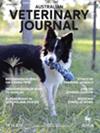维多利亚州西南部以牧草为基础的奶牛群中与第一次泌乳繁殖性能相关的早期生活事件。
摘要
这是一项前瞻性队列研究,旨在确定澳大利亚维多利亚州以牧草为基础的奶牛群中,从出生到第一次产犊期间发生的事件如何影响第一次泌乳期的繁殖性能。研究记录了断奶前(0 到 84 天)、断奶到首次配种(85 到 473 天)以及首次配种到首次产犊(474 到 804 天)期间发生的事件,并量化了这些事件与第一个泌乳期繁殖性能的关系。繁殖性能结果包括从首次交配开始日到第一次服役的天数(MSD-S1)和从首次交配开始日到第一次受孕的天数(MSD-CON)。繁殖性能的预测因素包括作为犊牛的被动转移状态;出生季节;母牛的年龄和品种;品种;小母牛出生时有无子宫收缩;主动喂食初乳还是让母牛吃初乳;有无双胞胎;有无断奶前腹泻;断奶前、青春期前和青春期后的平均日增重;初产犊牛是否患有围产期疾病;初产犊牛的年龄;初产犊牛的体况评分;初产犊牛的性别;初产犊牛是否死胎以及初产犊牛是否需要辅助。我们建立了两个 Cox 比例危险回归模型:第一个模型是与 MSD-S1 相关的早期生活事件变量,第二个模型是与 MSD-CON 相关的早期生活事件变量。与春季出生的小母牛相比,秋季和冬季出生的小母牛每天接受人工授精的风险分别为2.89倍(95% CI 1.50至5.59,P = 0.002)和1.97倍(95% CI 1.12至3.44,P = 0.018)。在 MSD-S1 分析中,产下活犊的小母牛与产下死犊的小母牛相比,每天受精的风险分别为 1.64(95% CI 1.14 至 2.36,P = 0.008)倍。在第一次配种到第一次产犊期间,增重每天增加 0.1 千克会使第一次人工授精的日风险增加 1.10 倍(95% CI 1.00 到 1.22,P = 0.043)。与第一次产犊时未发生围产期疾病的母牛相比,发生围产期疾病的母牛每天受孕的风险显著降低(HR 0.67,95% CI 0.50 至 0.91,P = 0.009)。在第一次配种到第一次产犊期间,体重增加 0.1 千克/天会使受孕的日风险增加 1.10 倍(95% CI 1.01 到 1.21,P = 0.038)。我们的结论是,在本研究评估的所有生长期中,发生在第一次配种到第一次产犊期间(474 到 804 天)的事件与第一次泌乳期的繁殖性能关系最大。在这一时期,应重点提高生长速度,降低死胎和围产期疾病的风险,以提高产犊后交配期的繁殖性能。This was a prospective cohort study to determine how events from birth until first calving affect reproductive performance in the first lactation in pasture-based dairy herds in Victoria, Australia. Events during the preweaning (0 to 84 days), weaning to first breeding (85 to 473 days) and first breeding to first calving periods (474 to 804 days) were recorded and their association with reproductive performance during the first lactation was quantified. Reproductive performance outcomes included the number of days from first mating start date to first service (MSD-S1) and the number of days from first mating start date to first conception (MSD-CON). Predictors for reproductive performance included: passive transfer status as a calf; season of birth; age and breed of the dam; breed; the presence or absence of dystocia at the time of the heifer's birth; active feeding of colostrum versus being left on the dam for colostrum intake; presence of twinning; the presence or absence of preweaning diarrhoea; preweaning, prepubertal and postpubertal average daily gain; the presence or absence of periparturient disease at first calving; age at first calving; body condition score at first calving; sex of the first-born calf; the presence or absence of a stillborn calf at the first calving and requirement of assistance at first calving. Two Cox proportional hazards regression models were developed: the first for early life event variables associated with MSD-S1 and the second for early life events associated with MSD-CON. Heifers born in autumn and winter had 2.89 (95% CI 1.50 to 5.59, P = 0.002) times and 1.97 (95% CI 1.12 to 3.44, P = 0.018) times the daily hazard of being inseminated compared with heifers born in spring, respectively. For the MSD-S1 analyses heifers that gave birth to a live calf had 1.64 (95% CI 1.14 to 2.36, P = 0.008) times the daily hazard of being inseminated compared with heifers that had a stillborn calf. Increases in weight gain during the first breeding to first calving period by 0.1 kg/day increments increased the daily hazard of first insemination by a factor of 1.10 (95% CI 1.00 to 1.22, P = 0.043). Heifers that experienced periparturient disease had a significantly lower hazard of conception per day compared with heifers that did not experience periparturient disease at the first calving (HR 0.67, 95% CI 0.50 to 0.91, P = 0.009). Increases in weight gain during the first breeding to first calving period by 0.1 kg/day increased the daily hazard of conception by a factor of 1.10 (95% CI 1.01 to 1.21, P = 0.038). We conclude that of all the growth periods assessed in this study, events that occurred during the first breeding to first calving period (474 to 804 days) had the greatest association with reproductive performance in the first lactation. There should be a focus on increasing growth rates during this period and reducing the risk of stillbirth and periparturient disease to improve reproductive performance in the subsequent mating period after calving.

 求助内容:
求助内容: 应助结果提醒方式:
应助结果提醒方式:


